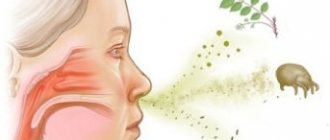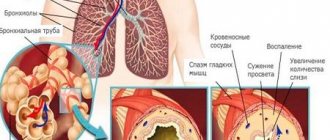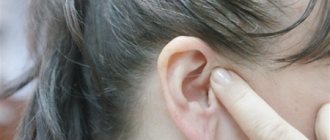What is inflammation of the sinuses?
The paranasal sinuses are located in the bones of the skull. All of them are connected by the outlet to the nasal cavity. There are maxillary, frontal, ethmoid and main sinuses. Depending on which of them is inflamed, there are:
- Sinusitis. The right or left maxillary sinus becomes inflamed.
- Frontites. Damage to one of the frontal sinuses.
- Ethmoidites. Inflammation affects the ethmoid sinus.
- Sphenoiditis. The infection entered the sphenoid bone.
The name of the diagnosis depends on which sinus is affected
Thus, indicating a diagnosis helps to accurately determine in which area the inflammatory process occurs. In medical terminology, damage to several sinuses on one side is called hemisinusitis, and damage to all sinuses at once is called pansinusitis.
Why are sinuses needed?
The importance of the paranasal sinuses in the body cannot be underestimated. First, let's remember the anatomy course. The sinuses are cavities in the skull that are normally filled with air and connected to the nose by small openings called anastomoses.
A person has four types of sinuses: maxillary (also known as maxillary), frontal, ethmoidal labyrinth and sphenoid, and each of them can be susceptible to inflammation.
The nasal sinuses perform a number of important tasks. The first function is protective. The air in them softens the blow in case of skull injuries (the principle of the airbag operates here). The air inhaled through the nose, passing through the sinuses, is heated and humidified to parameters that are comfortable for the body. Another function of the sinuses is olfactory, thanks to which we recognize odors. They also take part in the formation of individual timbre, sonority of the voice and its other characteristics, make the weight of the skull lighter and protect the roots of the teeth and eyeballs, which are sensitive to cold, from temperature changes.
As already mentioned, healthy sinuses are filled with air. But due to the action of certain factors, mucous masses and pus can accumulate in them, which becomes a source of severe inflammation.
Inflammation of the maxillary sinuses is called sinusitis, the frontal sinuses are called frontal sinuses, the sphenoid sinuses are called sphenoiditis, and the cells of the ethmoidal labyrinth are called ethmoiditis.
Causes of the disease
Inflammation of the paranasal sinuses is caused by various factors, including viruses, bacteria, fungi or allergens. Frequent runny noses, a deviated nasal septum, improper treatment of colds and a decrease in general immunity contribute to the development of the disease. In children, the development of the disease is facilitated by adenoids and the general immaturity of the body's immune system.
Inflammation of the paranasal sinuses can be acute or chronic. Chronic, in turn, is divided into purulent, catarrhal, polypous and other forms.
In adults, inflammation of the maxillary and frontal sinuses most often occurs. In childhood, the ethmoid and maxillary muscles often become inflamed.
How does the disease progress?
Patients often confuse the onset of the disease with a common runny nose or cold, in which the nasal mucosa becomes inflamed. Later, symptoms of damage to one or more accessory sinuses appear.
What symptoms help to recognize sinusitis:
- Prolonged runny nose, accompanied by copious purulent discharge. A typical runny nose lasts about a week; if nasal discharge continues after this period, then this is a reason to think about possible sinusitis.
- Pain of various localizations. With sinusitis, the patient has pain in the cheek area, eye socket and upper jaw; with frontal sinusitis, it usually hurts in the forehead and bridge of the nose. With sphenoiditis and ethmoiditis, pain affects the bridge of the nose. The pain intensifies when tilting the head or tapping the affected sinus.
- Symptoms of general intoxication. The patient's condition is moderate, in addition to local manifestations of the disease, he may develop a fever. Weakness, lethargy sets in, and appetite disappears.
- Congestion, swelling, and loss of smell are indirect signs of sinusitis. These symptoms can be either a sign of a common runny nose or indicate sinus inflammation.
- Atypical symptoms: swelling of the wings of the nose may be observed. When the nasolacrimal duct is blocked and infected, conjunctivitis may develop.
One of the obvious signs of the disease is pain in the affected sinus area
This clinical picture occurs if the patient has acute inflammatory processes in the sinuses. In the case of chronic inflammation, the symptoms of the disease may differ:
- The patient is bothered by scanty discharge and nasal congestion.
- Signs of a chronic source of infection in the body come to the fore: weakness, lethargy, decreased performance, deterioration of appetite.
- During the period of exacerbation, the symptoms are similar to the acute form of the disease.
Causes of pain in the sinuses
One of the main causes of pain is the impact of some negative factor on the nasal mucosa. As a result, inflammatory processes of varying intensity begin to develop on its surface. In medical terminology, this reaction is called “rhinitis.” Here is a list of its main types:
- Infectious.
- Allergic.
- Medication.
- Vasomotor.
- Hypertrophic.
- Atrophic.
- Specific.
Rhinitis of infectious etiology develops due to exposure to various bacteria, viruses, and fungi on the mucous membrane. The pain syndrome in this case is the result of swelling of the mucous membrane. In the absence of adequate treatment, the pathological process quite quickly passes into the exudation phase, the main symptom of which is the appearance of a runny nose. In this case, nasal discharge is transparent in most cases. With a staphylococcal infection, they can acquire a greenish tint.
Allergic rhinitis is manifested by copious discharge from the nasal cavity, frequent sneezing, lacrimation, and congestion of the nasal passages. In addition, a person has pain in the sinuses and head, and the pain is constant, the duration of which depends on the period of time of interaction with a specific allergen.
Vasomotor or vascular rhinitis. This is a pathology that occurs in the human body without exposure to any provoking agent. The disease is a consequence of vasospasm of the mucous membrane of the nasal cavity against the background of its special sensitivity to the effects of low temperatures. Therefore, the first manifestation of the disease usually occurs in winter.
Rhinitis of infectious etiology develops due to exposure to various bacteria, viruses, and fungi on the mucous membrane. The pain syndrome in this case is the result of swelling of the mucous membrane. In the absence of adequate treatment, the pathological process quite quickly passes into the exudation phase, the main symptom of which is the appearance of a runny nose. In this case, nasal discharge is transparent in most cases. With a staphylococcal infection, they can acquire a greenish tint.
Allergic rhinitis is manifested by copious discharge from the nasal cavity, frequent sneezing, lacrimation, and congestion of the nasal passages. In addition, a person has pain in the sinuses and head, and the pain is constant, the duration of which depends on the period of time of interaction with a specific allergen.
Vasomotor or vascular rhinitis. This is a pathology that occurs in the human body without exposure to any provoking agent. The disease is a consequence of vasospasm of the mucous membrane of the nasal cavity against the background of its special sensitivity to the effects of low temperatures. Therefore, the first manifestation of the disease usually occurs in winter.
It is because of this feature that the pathology is sometimes called “cold allergy.” Due to disturbances in the vascular system, the disease continues to actively manifest itself in warm climates. Its main symptoms include severe pain in the bridge of the nose and liquid discharge from its channels, the basis of which is sweated blood plasma.
Hypertrophic rhinitis is a chronic pathology characterized by severe proliferation of the mucous membranes of the nasal canals. The result of this process is a narrowing of the nasal passages. This leads to changes in voice and constant soreness in the sinus area.
Atrophic rhinitis is the opposite of the previous process, the result of which is atrophy of the mucous membranes of the nose and paranasal sinuses. This leads to the fact that the glandular cellular structures lose their ability to absorb exudate, which causes a runny nose and permanent pain.
Specific rhinitis occurs as a result of exposure of the mucous membranes to dangerous bacteria. These include the causative agents of leprosy, syphilis, and tuberculosis. As a result of such destructive processes, not only the mucous membranes are destroyed, but also the bone structures adjacent to them. Due to damage to the nerve endings, the sinuses hurt, and the pain syndrome occurs at the very last stages of the pathological process.
Drug-induced rhinitis develops against the background of prolonged use of medications that have a vasoconstrictor effect on the mucous membranes. Typically, such drugs are remedies for the common cold, an attempt to cure which leads to the exact opposite result. Pathological narrowing of blood vessels causes persistent disruption of blood supply and the development of drug-induced rhinitis.
One of the most common diseases that causes constant pain in this area. The pathology is very often accompanied by profuse lacrimation. The lack of therapeutic measures leads to a narrowing of the nasal cavity and causes manifestations of chronic rhinitis, which is not amenable to any medication. Symptoms of the disease disappear only after puncturing the maxillary sinuses and pumping out the contents accumulated there.
The main signs of sinusitis, in addition to discomfort, include:
- feeling of tension and pressure in the affected area;
- pain in the cheekbones, temples, forehead;
- difficulty with nasal breathing;
- temperature increase;
- general malaise.
Pain without runny nose
Constant pain in the sinuses without a runny nose can have the following causes:
- Traumatic injuries.
- Facial burns.
- Inflammatory skin diseases.
- Herpetic infection.
- Acne.
- Neurological pathologies.
To clarify the diagnosis, you must contact qualified medical specialists.
Diagnostics
Establishing the true cause of the problem is possible only in a specialized medical institution. If the pain syndrome is accompanied by active manifestations of a runny nose, then there is a high probability that this pathological process is in the wake of diseases of the otolaryngeal spectrum. And the best option would be to consult an otolaryngologist.
If painful sensations in the paranasal sinuses are not accompanied by discharge from the nasal canals, and the person does not have any dermatological manifestations or lesions of the facial part, then the best choice would be to consult a neurologist. In this case, most likely, the process is neurological in origin and may indicate trigeminal neuralgia.
Diagnostics and therapy
The diagnosis of sinusitis and frontal sinusitis can be made using a regular x-ray. It is more difficult with inflammation of the ethmoid sinuses and sphenoid sinus. Data on such a pathological process can only be obtained using CT or MRI.
In addition to instrumental diagnostic methods, the doctor always examines the inside of the patient’s nose. Thus, he may notice a deviated nasal septum and pus in the area of the nasal passages. Blood tests indicate a general inflammatory process.
To confirm the diagnosis, the doctor examines the patient and conducts a series of studies
Treatment of the disease depends on the extent of the pathological process, the patient’s condition and the presence of complications. Systemic treatment includes:
- Antibiotic therapy. Preference is given to protected penicillins or macrolides. If a patient is suspected of having a chlamydial or microplasma etiology of the disease, then macrolides are chosen.
- Antihistamines. These medications are needed to relieve swelling in the nose and unblock the natural outlet.
- Medicine against fever and inflammation. Prescribed for appropriate symptoms and severe pain.
- Mucolytics. They help to liquefy the viscous secretion in the sinus and promote its removal to the outside.
In addition to systemic therapy, sinusitis is also treated with local means:
Is it possible to warm the nose with sinusitis?
- Nasal drops. Different groups of these funds are used. Vasoconstrictors to relieve swelling, antibacterial to destroy infection, saline solutions for rinsing and others. Among the drops, Sinuforte based on cyclamen root is separately distinguished. This remedy promotes the release of mucus from the nose by enhancing its production.
- Rinsing and cleansing the nose with sea salt solutions.
- Physiotherapy.
In addition to drugs, various procedures and surgery are used to treat the disease. Thus, an effective means for removing pathological discharge from the nose is the Proetz rinse, or “cuckoo”. It should be done by a doctor. To do this, the patient lies down on the couch and an antiseptic solution is given to him in one nostril, and from the other nostril this solution is sucked out with a special suction. The procedure is painless and safe. If performed incorrectly, there are complications in the form of otitis media, so it must be performed by a doctor.
Causes, symptoms and treatment
Acute disease appears as a result of infection, and chronic disease occurs due to untimely treatment of acute sphenoiditis. The disease is accompanied by severe, aching headaches in the back of the head. The discomfort does not go away even after taking medications. Less commonly observed symptoms are decreased visual acuity, dizziness, and weakness.
Symptoms and treatment of pathology are interrelated, since therapy is mainly symptomatic. Antibacterial and anti-inflammatory drugs are used. In the chronic form of the disease, surgery may be required. It is aimed at sanitizing the sphenoid sinus. This eliminates the inflammatory process and alleviates the patient's condition. The use of folk remedies alone is not recommended, since the lack of drug therapy can lead to intracranial complications.
Thus, all types of sinusitis are accompanied by similar symptoms. It is impossible to independently determine the exact disease . Therefore, if unpleasant symptoms occur, an examination by a doctor is required.
Surgery
If the patient’s normal outflow from the natural anastomosis from the sinus is disrupted, and it was not possible to unblock it, then they resort to sinus puncture. Any sinus can be punctured, but in practice, puncture of the maxillary sinus and trephine puncture of the frontal sinus are more often performed. This is a slightly unpleasant invasive surgery that should be performed by a qualified professional.
The maxillary sinus is pierced with a special needle under local anesthesia to remove pus from there.
If a patient develops life-threatening complications or conservative treatment for a long time does not bring a positive result, then they prefer to treat the disease surgically. For these purposes, the sinus is opened with special instruments and cleared of pathological contents. In this case, an additional excretory anastomosis can be formed for the outflow of contents.
Questions for the doctor
Question: The inside of my nose is red and inflamed. Could this be a sign of sinusitis? Answer: It is unlikely; such symptoms are more characteristic of purulent melting of cartilage or a boil of the nose.
Question: How to treat sinusitis in a child? Answer: Antibiotics, anti-inflammatory, local drops. Treatment is the same as for an adult, only approved drugs are chosen for a specific age.
Question: Is it possible to heat the sinus with purulent sinusitis? Answer: Absolutely not. No purulent process can be treated with heat. This can cause the infection to spread and complications to develop.
What to do if your sinuses and head hurt
If your sinus hurts right under your eye, you should see a doctor without delay. Treatment tactics in this case depend on where the inflammatory process is localized and the nature of the disease. So, with a purulent process, you cannot do without antibiotics, while with catarrh, you can take anti-inflammatory and antihistamine drugs.
If you have pain in the paranasal sinuses, your doctor will recommend undergoing a full examination to identify the cause of the ailment. To do this, they do an X-ray of the nose, rhinoscopy and blood tests. During the inflammatory process, leukocytes and ESR will be increased.
If the paranasal sinuses are just inflamed, the doctor will recommend rinsing the nose with antiseptic solutions. At the initial stage, rinsing the nasal cavity with Furacilin solution is effective. At the same time, broad-spectrum antibiotics are prescribed.
If you suspect sinusitis, you should not self-medicate, as the inflammatory process can become chronic. In this case, treatment becomes significantly more complicated.









